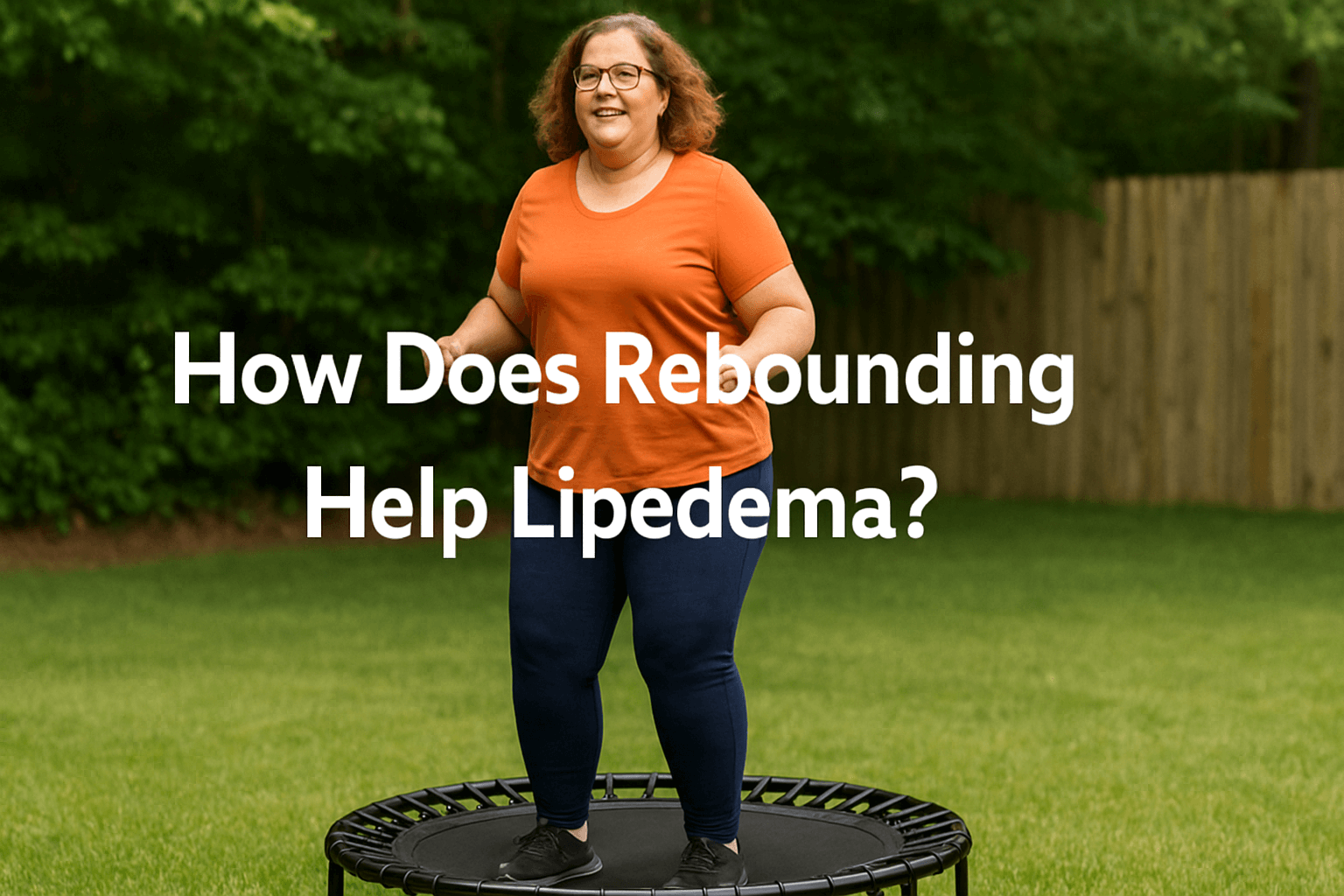
How Does Rebounding Help Lipedema?
Ever wished exercise felt more like play? The short answer: a therapeutic rebounder helps lipedema by boosting lymph flow, easing pain, and protecting joints. It’s fun, gentle, and surprisingly effective. Want to know why bouncing beats boring workouts? Keep reading—your body (and mood) will thank you!
Understanding Lipedema and the Lymphatic System
What is Lipedema?
Lipedema isn’t just about extra pounds. It’s a chronic condition where fat cells build up in the legs, and sometimes arms, leading to swelling, tenderness, and frustration. Unlike simple weight gain, it doesn’t shift with diet or exercise alone.
Many people describe the heaviness as carrying sandbags around their legs. It’s not only uncomfortable but also affects confidence and mobility.
The Importance of Lymphatic Drainage
The lymphatic system is like your body’s waste-removal service. When it slows down, fluid and toxins linger, making swelling and pain worse.
For those with lipedema, poor drainage is a daily battle. Supporting the lymphatic system isn’t just helpful—it’s essential for easing symptoms and keeping things from getting worse.

Rebounding as a Management Tool for Lipedema
Improving Lymphatic Flow and Reducing Swelling
The Bouncing Effect on Lymphatic Valves
Think of your lymphatic system as a one-way street with valves acting as tiny gates. Gentle bouncing on a rebounder pumps those gates open and shut, encouraging fluid to move along instead of pooling in your legs.
This simple up-and-down motion can make a big difference. Many people find swelling lessens once they make rebounding part of their weekly routine.
Alleviating Pain and Discomfort
When lymph moves freely, toxins don’t get the chance to build up. That means less inflammation and less pain.
Some people describe the relief as “taking the pressure off” or feeling lighter after a short session. Regular rebounding won’t make lipedema vanish, but it can take the edge off day-to-day discomfort.

Low-Impact Exercise for Joint Health
Why Low-Impact is Key for Lipedema
High-impact workouts like running can feel brutal if you’re already dealing with pain and swelling. Every step can feel like a thud through your joints.
That’s why rebounding works so well—it gives you the benefits of exercise without the punishment. The trampoline absorbs the impact, meaning your joints get a break while your circulation gets a boost.
Combining Rebounding with Compression Therapy
Want to take it a step further? Many people use compression garments while rebounding.
The bounce helps lymph flow, and the compression supports it along the way. It’s like giving your body an extra helping hand to keep fluid moving. Together, they make a powerful combo for managing symptoms.
Practical Rebounding Exercises for Lipedema
Starting out doesn’t need to be complicated. Keep it simple and listen to your body.
-
Gentle bouncing – Stand with feet hip-width apart and bounce lightly without lifting your feet off.
-
Leg lifts – Raise one leg slowly while bouncing with the other, then switch.
-
Arm circles – Stretch your arms out and make small circles as you bounce.
At first, five minutes a day is enough. Over time, you can build up to longer sessions. What matters most is consistency, not perfection.
Think of it like brushing your teeth—small, regular effort pays off more than one big burst once in a while.

Conclusion
Rebounding isn’t a cure for lipedema, but it can be a powerful tool in managing it. From easing swelling and pain to protecting your joints, it offers benefits without the strain of traditional workouts.
Add in the fun factor—it’s hard not to smile while bouncing—and it becomes easier to make it part of your day.
Try it, start small, and see how your body responds. Sometimes, the simplest movements bring the biggest relief.
⚠️ Disclaimer: This article is for informational use only and is not medical advice. Always seek guidance from a healthcare professional before starting any new exercise programme.
Have you checked out our other posts?
How Does Rebounding Change Your Body?
How Does Rebounding Help With Cellulite?




Leave a comment